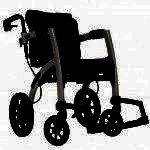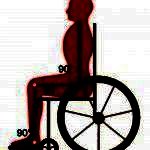Shortly before their departure to the games in Rio Jordanne Whiley and Dylan Alcott claimed their second British Open single titles apiece on the penultimate day of this year’s fifth Super Series event on the UNIQLO Wheelchair Tennis Tour, with Whiley retaining the women’s singles crown and Alcott regaining the quad singles title at Nottingham Tennis Centre, with the smile on Jo's face in the photo saying it all. Her perfromance in the recently modified wheelchair was absolutely brilliant, demonstrating true athletism through out the game
Ranked World Number four, Whiley raced into a 3-0 lead in the women’s singles final before the Dutch woman van Koot won three of the next four games to trail by just one game. However, Jordanne put together an impressive sequence of 8 games to wrap up a 63 60 victory and her second Super Series singles title a year on from landing her first in Nottingham.
“It was tougher than the score line suggests. Three and love sounds like a beating but it was tough today,” said Whiley. “Aniek is a tough opponent because she has that big forehand and a solid backhand. Today I felt like I played really well, I used the court well and didn’t get over excited and start hitting big, I just placed the ball well and hit my spots.
“I came here to make a mark and say to everyone that I’m a competitor for gold in Rio and I think I’ve done that by beating everyone and winning the title.”
Dylan Alcott also performed outstandingly with 5 out of 5 in Super Series singles finals this season, the last four of those victories coming against world No. 2 Wagner. The Australian world No. 1 made a good start to their latest encounter and went on to record a 62 62 victory to claim his latest Super Series crown just two years on from winning his first in Nottingham.
“Two years ago was my first big title, so that was a big milestone. Today was awesome, I played really well and it’s a good lead into Rio,” said Alcott. “I’ve had some really tough matches the last few weeks against a lot of the top guys. I had a massive scare in the semis against Lucas, so I was happy to get the win there and then played really well today.”
With only a week to go before the games start in Rio i hope they are hanging on to some of their energy reserves for what must be the biggest games of their lives in wheelchair tennis.






















